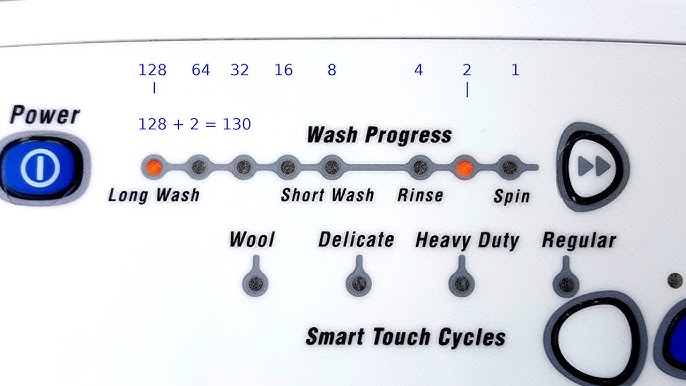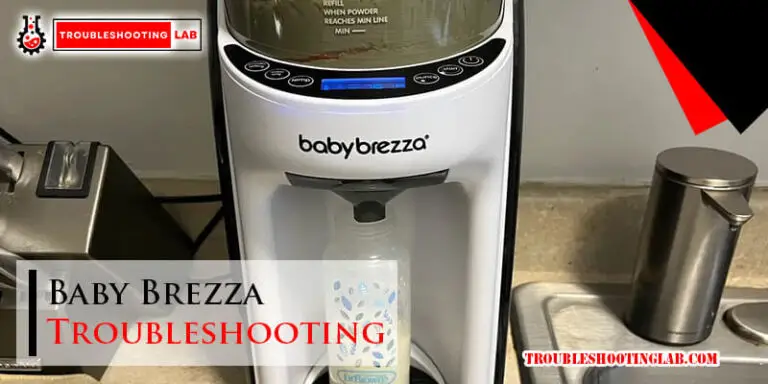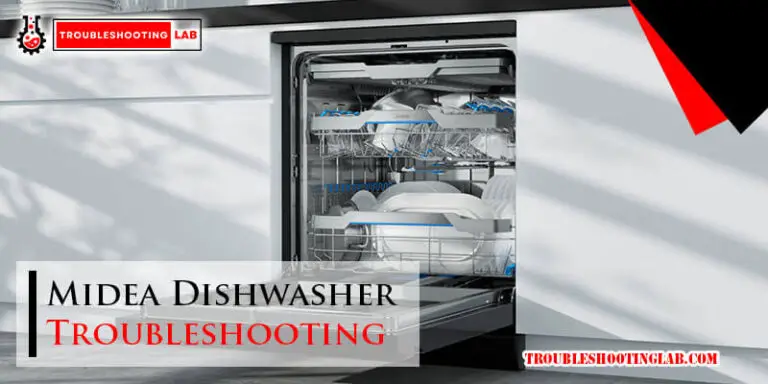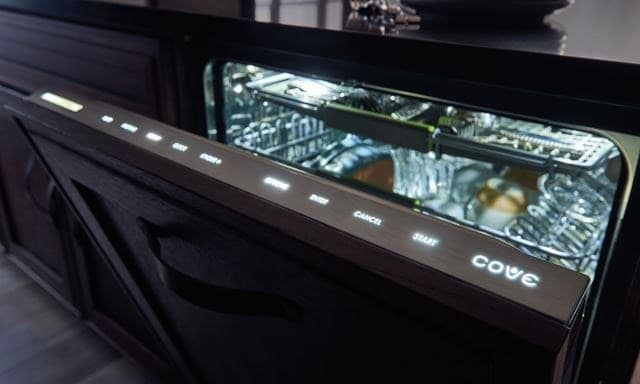Kitchenaid Dishwasher Control Board Troubleshooting: Easy Fixes
Imagine this: after a long day, you load your KitchenAid dishwasher, eager for sparkling clean dishes. But suddenly, it stops working, leaving you frustrated and worried.
You rely on this appliance to save time and effort, and now it’s causing stress instead. If you’ve found yourself in this situation, you’re not alone. The control board in your KitchenAid dishwasher is often the culprit, and understanding how to troubleshoot it can save you from unnecessary hassle and expenses.
In this blog post, you’ll discover simple, effective steps to diagnose and fix common control board issues. Whether your dishwasher is not starting, displaying error codes, or behaving erratically, you’ll find practical solutions to get it back to peak performance. By the end of this article, you’ll feel empowered with the knowledge to tackle these problems head-on, ensuring your kitchen routine continues smoothly. Don’t let a small glitch turn into a big problem. Dive in and reclaim your peace of mind today!
Common Control Board Issues
Many Kitchenaid dishwasher users face control board issues. These problems can disrupt the cleaning process. Understanding the common issues can aid in troubleshooting. This guide will discuss typical control board problems. You will find simple solutions to get your dishwasher running smoothly again.
Power Supply Problems
Power supply issues are frequent with control boards. The dishwasher may not start or operate. Verify the power outlet is functional. Check if the circuit breaker has tripped. Ensure the power cord is securely connected. If the problem persists, the control board may need inspection. Consider seeking professional help if needed.
Unresponsive Buttons
Unresponsive buttons often confuse users. This can halt your washing plans. First, check if the control panel is clean. Dirt can hinder button operation. Test each button for proper function. If buttons remain unresponsive, the control board may have a fault. Examine the board for visible damage. It may require replacement if faulty.
Error Codes Displayed
Error codes can appear on the dishwasher display. These codes indicate specific issues with the dishwasher. Refer to the user manual for code meanings. Common codes relate to water or door problems. Clearing the error might involve basic checks. Ensure doors are securely shut and water supply is adequate. Some codes require deeper inspection of the control board.
Initial Diagnostic Steps
Facing issues with your Kitchenaid dishwasher? Understanding the initial diagnostic steps can help. It’s important to narrow down the problem before seeking professional help. These steps can save time and money.
Checking Power Connection
Ensure the dishwasher is plugged in securely. A loose plug can cause issues. Check the circuit breaker in your home. It might have tripped. Reset if necessary. Look for any visible damage on the power cord. Replace it if frayed or damaged.
Inspecting Control Panel
Examine the control panel for visible damage. Buttons should not be stuck. Press each button gently to check response. Clean the panel with a soft, damp cloth. Avoid using harsh chemicals. Test the display lights. They should illuminate properly. If not, there might be a control board issue.
Resetting The Control Board
Resetting the control board can solve many issues with a Kitchenaid dishwasher. This simple step often fixes unresponsive buttons and error codes, restoring proper function. To reset, disconnect the power for a few minutes, then reconnect.
Resetting the control board of your KitchenAid dishwasher can solve many issues. A simple reset often resolves glitches and minor problems. Let’s explore how to perform both basic and advanced resets. These steps can help restore your dishwasher to optimal performance.Performing A Basic Reset
Begin with a basic reset to fix minor issues. Start by turning off the dishwasher. Unplug it from the power source. Leave it unplugged for about 5 minutes. This helps clear minor glitches. Plug the dishwasher back in after the wait. Turn on the dishwasher. Check if it starts working properly. This method is simple and often effective.Advanced Reset Procedure
Sometimes, a basic reset isn’t enough. An advanced reset may be necessary. First, ensure the dishwasher is off. Open the control panel by removing screws. Locate the control board inside. Disconnect the wires carefully. Wait for 10 minutes. Reconnect the wires securely. Close the control panel and secure it with screws. Restore power to the dishwasher. Test its operation. This advanced method can resolve more complex issues.
Credit: www.youtube.com
Replacing The Control Board
Experiencing issues with your Kitchenaid dishwasher’s control board? It may require replacement for proper function. Troubleshooting can help determine the need for a new control board, ensuring your appliance runs smoothly.
Replacing the control board in your KitchenAid dishwasher can seem daunting, but with the right guidance, it becomes manageable. Think about how satisfying it will be to fix your dishwasher yourself, saving money and learning a new skill. The control board is the brain of your dishwasher, managing all its functions. If it’s faulty, replacing it could restore your dishwasher to perfect working order.Identifying Replacement Parts
Before you dive into replacing the control board, identify the correct replacement parts. Check your dishwasher’s model number, typically found inside the door or on the side panel. Use this number to search for compatible control boards online or at your local appliance store. You might feel overwhelmed by the variety of parts available. Don’t hesitate to consult the user manual or ask a professional for confirmation. Remember, using the wrong part can cause further issues.Step-by-step Replacement Guide
Replacing the control board involves a few straightforward steps. Start by unplugging the dishwasher to ensure your safety. Next, remove the screws securing the control panel, usually located along the top edge of the door. Once you have access to the control board, take a picture of the wiring configuration. This will act as your map when reconnecting the wires later. Gently disconnect the wires and remove the faulty control board. With your new control board in hand, attach the wires based on your reference photo. Secure the board in place and reattach the control panel. Finally, plug your dishwasher back in and run a test cycle. This hands-on approach can be rewarding and educational. Have you ever tackled a home repair like this before? What did you learn from the experience?Preventive Maintenance Tips
Ensure your KitchenAid dishwasher runs smoothly by checking the control board regularly. Clean dust and moisture from the board. Secure any loose wires to prevent malfunctions.
Preventive maintenance can extend the life of your KitchenAid dishwasher. A well-maintained dishwasher performs better and saves money on repairs. Regular checks and simple routines can prevent common issues. Below are some tips to keep your dishwasher running smoothly.Regular Cleaning Routines
Regular cleaning prevents buildup and blockages in your dishwasher. Wipe down the door and gasket with a damp cloth. Clean the filter to ensure food particles don’t clog the system. Run a hot water cycle with vinegar monthly to clear residue. This keeps the interior and spray arms clean. Check and clean the spray arms regularly. Ensure no debris is blocking them. This helps maintain efficient water flow.Avoiding Electrical Surges
Electrical surges can damage the control board. Use a surge protector to safeguard your dishwasher. Avoid running too many appliances at once. This reduces the risk of overloading your home’s electrical system. Inspect the dishwasher’s power cord for wear and tear. Replace it if you see any damage. Keep your home’s wiring in good condition. This ensures a stable power supply to your dishwasher. Regular checks help prevent unexpected electrical issues.
Credit: www.kitchenaid.ca
When To Call A Professional
Experiencing persistent issues with your KitchenAid dishwasher control board? It’s time to call a professional. Experts can diagnose and fix complex problems efficiently, ensuring your appliance runs smoothly again.
When your KitchenAid dishwasher starts acting up, it can disrupt your daily routine. While some issues can be solved with a simple tweak, others require professional intervention. Knowing when to call a technician can save you time and prevent further damage. Let’s explore some situations where professional help is warranted.Complex Electrical Issues
Tackling electrical problems without the proper knowledge can be risky. If your dishwasher control board seems to have electrical faults, such as erratic behavior or complete failure, it’s time to step back. Attempting to fix intricate wiring or circuit issues on your own can lead to further damage or even personal injury. A professional has the tools and expertise to safely assess and repair these issues.Warranty Considerations
Is your KitchenAid dishwasher still under warranty? If so, attempting DIY repairs might void it. Manufacturers often specify that only authorized professionals should handle certain repairs to maintain warranty coverage. Check your warranty terms and conditions to avoid unnecessary costs in the long run. Sometimes, a personal story can illustrate this point: I once tried to fix an appliance myself and ended up voiding the warranty, leading to a more costly repair. Learn from my mistake—ensure your warranty remains valid by calling a professional when needed. In your experience, have you ever tried fixing an appliance only to make things worse? It’s a common scenario and a reminder that sometimes, it’s best to leave it to the experts. Remember, knowing when to call a professional is a sign of wisdom, not weakness. Your dishwasher and wallet will thank you.
Credit: www.reddit.com
Frequently Asked Questions
How Do I Reset My Kitchenaid Dishwasher Control Board?
To reset, disconnect power for one minute. Reconnect and start a new cycle.
Why Is My Kitchenaid Dishwasher Not Starting?
Check power supply, door latch, and control board. Ensure nothing obstructs the door.
What Causes Control Board Failure In Dishwashers?
Power surges, moisture, and age can damage the control board. Regular checks help.
How Can I Test A Dishwasher Control Board?
Use a multimeter to check voltage. Refer to your manual for guidance.
Can I Replace The Control Board Myself?
Yes, if you are handy. Follow the user manual for safety instructions.
Conclusion
Troubleshooting your Kitchenaid dishwasher’s control board can seem tricky. Start by checking connections and fuses. These often solve common issues. If problems persist, a replacement might be necessary. Always ensure safety when handling electrical components. Consult your manual for specific instructions.
Online forums can offer valuable insights from other users. Remember, patience is key in resolving appliance issues. With careful steps, your dishwasher will soon run smoothly again. Regular maintenance can prevent future troubles. Keep your dishwasher in top shape for hassle-free use.






